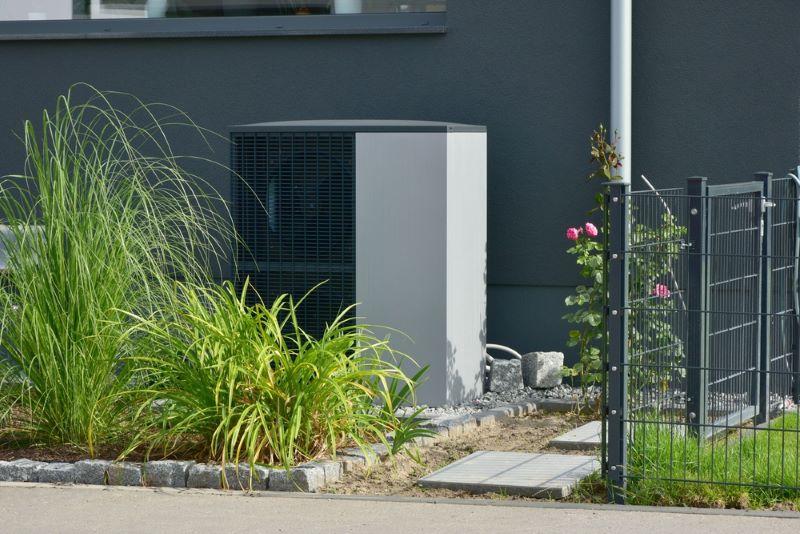According to the Polish Organisation for the Development of Heat Pump Technology, nearly 93,000 heat pumps were sold in 2021, including air-to-water units for heating and those for domestic hot water preparation and ground-source brine-to-water heat pumps. PORT PC forecasts that sales of heat pumps will double in 2022 (no report yet) to about 180,000 units, of which nearly 160,000 will be air-to-water heat pumps for central heating.
Heat pumps are becoming increasingly popular mainly due to the rising costs associated with fossil fuel power generation and the difficulty of obtaining it. Their main advantage is the attractiveness of heating costs (e.g. in existing single-family buildings, heating cost savings from using heat pumps reach up to 40%).

Heat pump manufacturers are currently facing a number of challenges. The equipment they offer must guarantee performance and compliance with regulations and meet the stated acoustic values. The high performance and energy efficiency of heat pumps forces component suppliers to meet high requirements in terms of:
- The durability of components.
- low noise levels,
- aerodynamics,
- resistance to environmental conditions,
- high performance and energy efficiency.
Therefore, the use of EC fans in heat pumps has almost become standard. Thanks to their modern motor design, these fans maintain a high-efficiency level throughout the control range, providing significantly lower current consumption than conventional fans. These fans are also quieter and have much higher durability and reliability. A huge advantage of EC fans is that the speed can be precisely adjusted to suit current requirements, which not only ensures optimum operation but also enables the highest requirements in terms of acoustic performance, air output and energy efficiency to be met.
These extremely quiet, highly efficient and cost-effective fans work well wherever the heat pump is installed - indoors or outdoors. The two types of pumps have different aerodynamic requirements, which is why different types of fans are used.
Fans for indoor installations
In the case of an indoor installation, the unit draws in outside air through the intake duct and exhausts it through the exhaust duct. Due to the design of the pump and the possibility of using long duct sections, there is considerable resistance that the fan must overcome when pumping air. Compact radial fans are ideally suited to such tasks due to their design. They have a small footprint and a high discharge pressure, so they can provide adequate airflow even when the overall system is subjected to high resistance.
AFL’s B3P series of radial fans are equipped with energy-efficient EC motors providing efficient operation with low power consumption. Thanks to the optimum combination of motor and rotor design and software, they achieve a high compression of up to 1,000 Pa. The optimum shape of the impeller and the air intake funnel combined with modern EC motors ensure maximum efficiency of the fan unit.
Fans for outdoor installations
In external heat pumps, a fan forces air through the evaporator. In designs of this type, the evaporator has a large heat transfer surface area, so airflow velocities and evaporator resistance are relatively low. Therefore, axial fans with large diameters, up to 800 mm, are used for this type of solution. They are ideal for equipment such as heat pumps, where high airflow, low noise and low power consumption are required and the design itself does not create high static resistance. The AFL fans can operate between 15% and 100% of their capacity so that their output can be easily adapted to changing heat pump operating conditions through the pump control system. At the same time, they ensure the quiet and energy-efficient operation of the entire system.
Noise during heat pump operation
However, choosing the right quiet fan is only half the battle. Fan noise is also affected by the overall design of the unit. Poorly designed can introduce additional turbulence that adversely affects fan operation.
Therefore, during construction work, attention should be paid to aspects such as:
- Observing recommended minimum distances between the fan and the structural components of the unit
- The airflow compartment should have an aerodynamic, streamlined shape.
- The fan inlet funnel should have a curved edge.
- The enclosure should be rigid, stable and not susceptible to vibration.
The accuracy of the technical performance of AFL fans is confirmed by numerous certificates
and compliance with ErP efficiency standards. Also, in its extensive R&D Department, AFL tests heat pump fans for energy consumption, air flow rate and noise levels. Complete units are also tested on behalf of customers to avoid design errors that could adversely affect the fan’s operation already at the implementation stage of a new product. Please feel free to contact the European Sales and Project Support Office.
AFL offers 2 types of fans for heat pumps:
- Compact EC centrifugal fans
- High-powered EC axial fans

